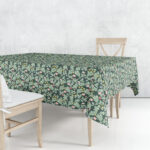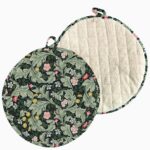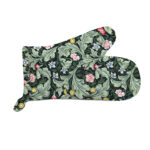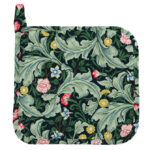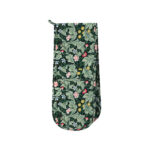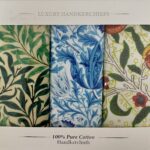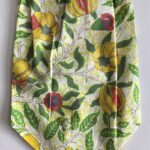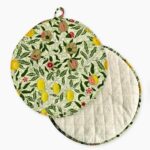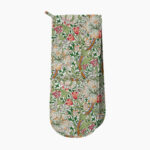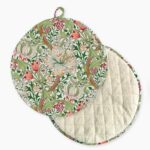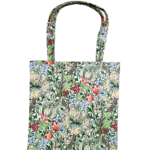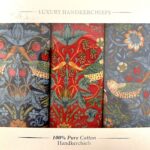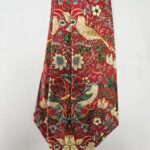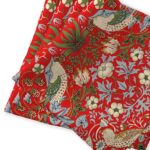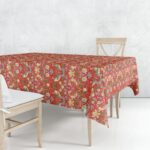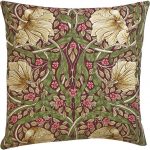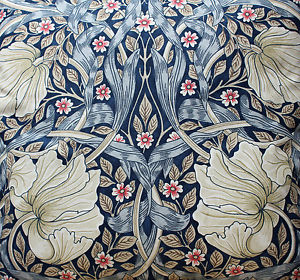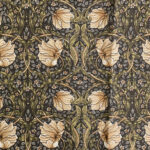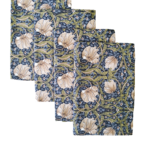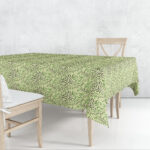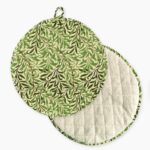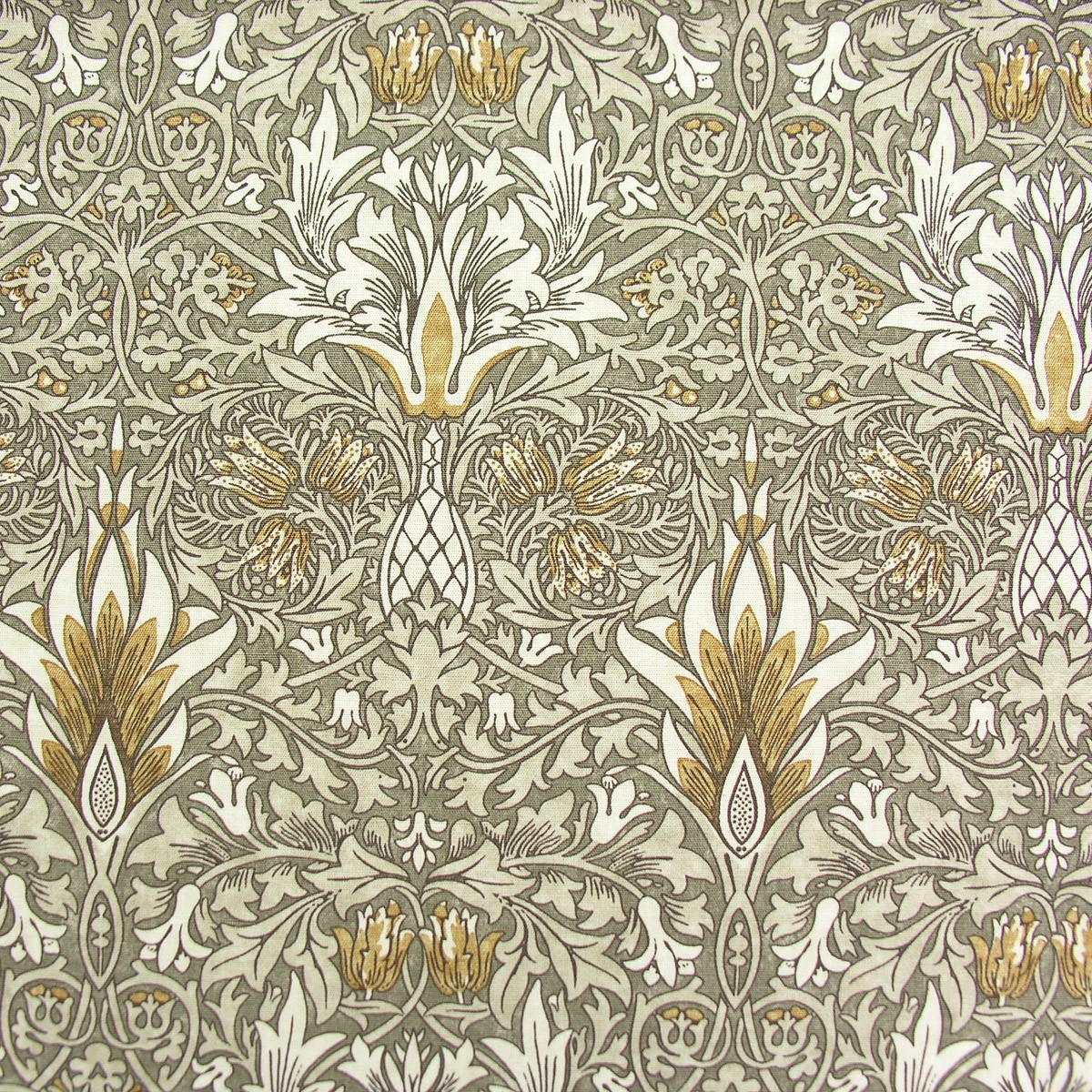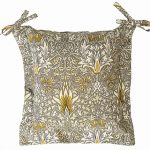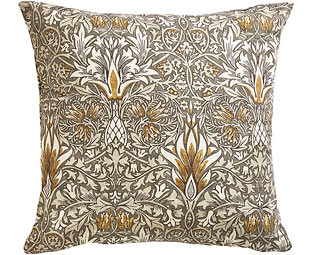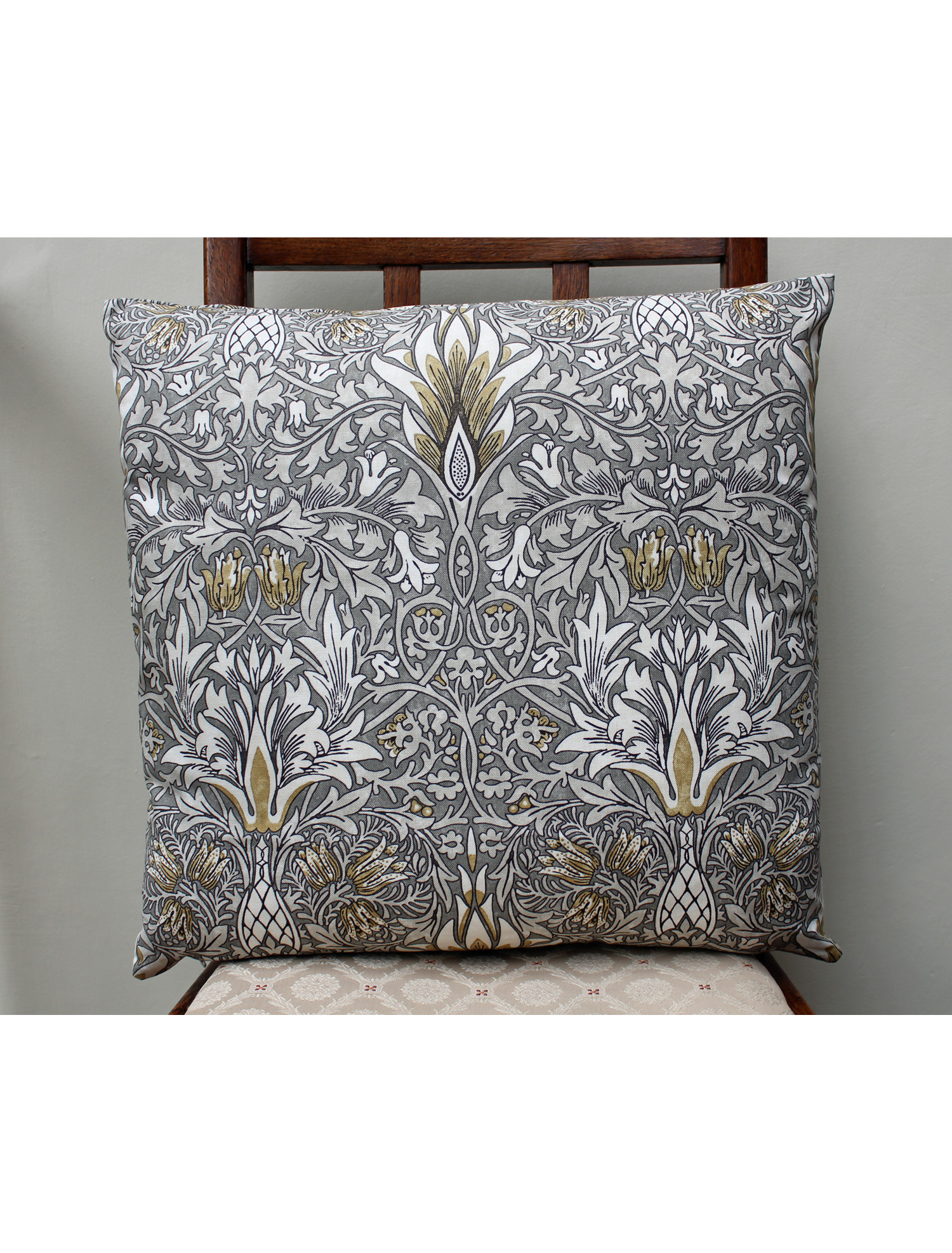William Morris Chrysanthemum was originally designed by William Morris and later printed with Morris & Co in 1877. This design follows Morris’ opinion that the ideal pattern should depict suggestions of gardens and fields. Morris’ idea of working with natural forms translates beautifully in the Chrysanthemum pattern which depicts blooming Chrysanthemums facing upward to the left and right in alternate rows, framed with beautiful foliage.
Chrysanthemum
William Morris William Morris was often inspired by his surroundings to develop his designs further; Cray was no exception. Inspired by a sample of a 17th century cut of fabric that Morris had viewed at the Victoria and Albert Museum he set off to create a new design. And so, in 1884 Cray was born. Cray is a design enriched by natures influence. Within the design, you can see motifs of foliage, leaves and flowers of various sizes. The vines interlace bearing an abundance of flowers in various stages of bloom set with a robust diagonal direction.
Cray
William Morris Fruit, previously known as Pomegranate is one of Morris's earliest designs and was first produced in 1864. Similar designs with fruit and leaf motifs were used in the Green Dining Room in the South Kensington Museum (later known as the Victoria and Albert Museum) which Morris & Co were commissioned to decorate in 1866. The print itself depicts a design of a fruit tree bearing lemons, pomegranates and oranges on a pale background.
Fruits
William Morris Lily flowers and country blooms wind through this briar leaf design – the ultimate country cottage pattern. Shown in fresh greens, blues and pinks.
Golden Lily
William Morris Designed by William Morris, Lodden was first brought to print at Merton Abbey in 1883. Originally sold through Morris & Co, Lodden was a highly popular print due to its bold motifs and visually pleasing symmetrical design. Lodden is full of enchanting natural motifs of various sizes including leaves, vines, foliage and various blooms. The vines form beautiful arches, enveloped with flowers that catch the eye with a gradient of colour, softening the piece.
Lodden
William Morris Strawberry Thief is one of William Morris’s best-known designs but one of his most challenging to achieve. When printing the pattern, Morris decided on the indigo discharge method which is an ancient technique from the East. Morris chose this method due to his admiration for the sharp detail and depth of colour it could produce. He first attempted his print of Strawberry thief in 1875 but was unsuccessful, and it wasn’t until 1881 in his Merton Abbey factory near Wimbledon that he finally succeeded. Strawberry Thief inspired on Morris’s own experience of thrushes stealing strawberries from his private kitchen garden at Kelmscott Manor. Strawberry Thief was one, if not the most, expensive design from Morris & Co but despite this, it became and remained to this day a firm favourite with clients.
Stawberry Thief Crimson
William Morris Morris designed Pimpernel in 1876 and later chose it to decorate his dining room at Kelmscott House in Hammersmith, London. The design is a complex structure of tulip flowers and leaves in a swirling pattern, resting on a contrasting aubergine ground and reversing to a delicate small scale scrolling floral co-ordinate.
Pimpernel
William Morris William Morris favoured the Willow motif and used it in some of his most famous works. If you look closely at patterns such as Lily, you can see it as a smaller background motif to the Lily itself. In 1874 the actual design for Willow bough began, starting with a pattern named merely Willow. Willow was a stylised representation of willow leaves on a dark ground which later leads to the design still so popular to this day, Willow Bough. This is a far more naturalistic version of the earlier pattern, more to Morris' classic taste.
Willow Bough
William Morris Strawberry Thief is one of William Morris’s best known designs but one of his most difficult to achieve. When printing the pattern, Morris decided on the indigo discharge method which is an ancient technique from the East. Morris chose this method due to his admiration for the sharp detail and depth of colour it could produce. He first attempted his print of Strawberry thief in 1875 but was unsuccessful, it wasn’t until 1881 in his Merton Abbey factory near Wimbledon that he finally succeeded. Strawberry Thief is based on Morris’s own experience of thrushes stealing strawberries from his own kitchen garden at Kelmscott Manor. This was one, if not the most, expensive design from Morris & Co but despite this it became and remained to this day a firm favourite with clients.
Strawberry Thief Slate
William Morris Designed by William Morris in 1876, the design was originally block printed onto cotton. Between 1875 and 1877 Morris produced a small group of patterns influenced by the colouring and patterns of Indian textiles. This design was one of Morris’ own favourites among his printed chintzes. The design takes its name from the nodding snakeshead fritillary blooms that complement the larger, more formal motifs. The dramatic flame like motif and alternating spiky clusters of foliage seem held in suspension by the delicate scrolling tendrils that form the background.
Snakeshead
William Morris Strawberry Thief is one of William Morris’s best known designs but one of his most difficult to achieve. When printing the pattern, Morris decided on the indigo discharge method which is an ancient technique from the East. Morris chose this method due to his admiration for the sharp detail and depth of colour it could produce. He first attempted his print of Strawberry thief in 1875 but was unsuccessful, it wasn’t until 1881 in his Merton Abbey factory near Wimbledon that he finally succeeded. Strawberry Thief is based on Morris’s own experience of thrushes stealing strawberries from his own kitchen garden at Kelmscott Manor. This was one, if not the most, expensive design from Morris & Co but despite this it became and remained to this day a firm favourite with clients.

